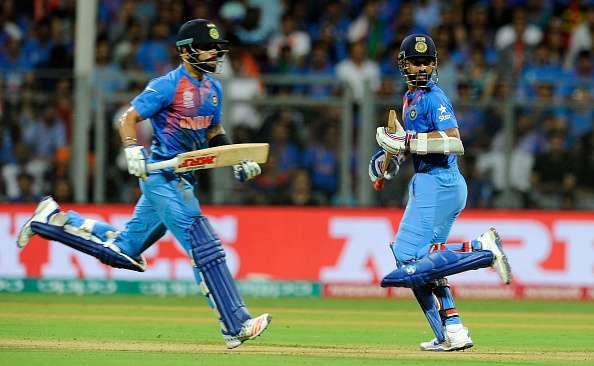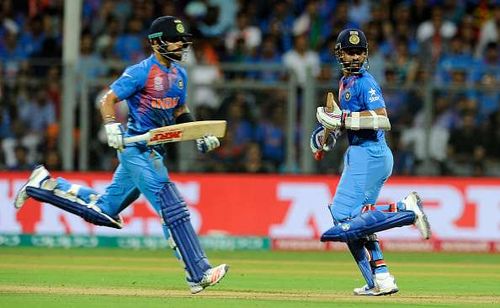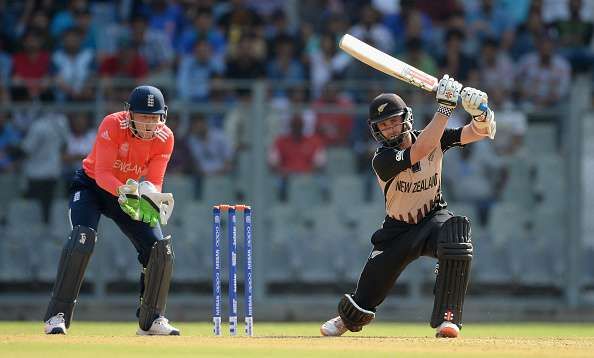
The relevance of sheet anchors in T20 Cricket

If someone told a cricket fan a decade back that the role of a sheet-anchor will be crucial to the success of the batting unit in a T20 team, chances are he would be laughed off. This, the shortest format of the game, was after all supposed to be all about slam-bang cricket.
How could you possibly reconcile yourself to associating legends like Rahul Dravid and Jacques Kallis, possibly the game’s best ever sheet-anchors, with meaningfully contributing to an innings spanning just 20 overs?
The role of a sheet-anchor in cricket has been described as that of a batsman who provides dependable defence while a series of other batsmen score rapidly. Defence in T20!!!??? Well, probably not.
Also Read: Analysing the role of Ajinkya Rahane in the limited-overs format
Maybe that definition needs a little bit of tweaking in the context of T20 cricket. But the fundamentals remain the same. You need somebody who holds if not the entire, but at least a considerable length of the 20-over batting innings together, around whose calm and assured presence, the ‘blasters’ and ‘dashers’ can make merry at the other end.
And if the way some of the current generation’s great players have been going about their business in T20 cricket is anything to go by, the sheet-anchor is here to stay in T20 cricket for many more years.
As far as this IPL is concerned, three Indians, namely Virat Kohli, Ajinkya Rahane and Gautam Gambhir have been playing the role of sheet-anchor to near perfection. All three have been opening the innings for their sides and are topping the highest run-getters charts. This indicates a considerable length of time spent in the middle.
Also Read: Gautam Gambhir vs Shikhar Dhawan - The battle of form
The fact that their batting strike rates hover around the mid 125s, except Kohli’s who is around the 135 mark, also tells us that they are really not going hell for leather and are looking to score briskly while being all the time conscious of not losing their wicket.
Contrast this to the strike rates of ‘dashers’ like a Warner (strike rate 168.5) and AB de Villiers (strike rate 163.2) or even a Pollard (strike rate 162.6), Yusuf Pathan (strike rate 163.4) or Andre Russel (strike rate 156.8) and the difference between the T20 sheet-anchors and ‘dashers’ become clear as chalk and cheese.
What is also common to Kohli, Rahane and Gambhir’s overall IPL record is that before the commencement of this edition all three had batting averages in the 30s and strike rates in the 120s.
So is this only an Indian phenomenon?

One would like to think not on closer scrutiny of developments in the world of international T20 cricket. Joe Root, in the recently concluded T20 World Cup, showed a tremendous propensity to play a long T20 innings, accumulating lots of runs at a fair clip.
He never came across as a slogger and produced delectable and reassuring cricket shots repeatedly to become the cornerstone of England’s successful run in the World Cup where they finished as runners-up. With Root around, dashers like Alex Hales, Jason Roy, Jos Butler and Ben Stokes were able to express themselves more freely.
Root also has a T20 strike rate of 138 at an average of 39.
Hashim Amla of South Africa is another batsman at the top of the order, who seems to be playing the role of an accumulator and calmer to the blasters in the side like Quinton de Kock, AB de Villiers, David Miller and the like. In-fact like India, even the Proteas seem to be having one sheet-anchor too many.
One brisk accumulator and another who scores a bit faster. Probably double cover to ensure a respectable score every time. So if India at the moment have Kohli and Rahane in the same eleven, South Africa have Faf du Plessis as cover for Amla. And if Amla’s batting average in T20 is 31.5, Faf’s is a bit higher at 37.7.
Ditto with their strike rates where Amla scores at 129 per 100 balls while Faf is faster at 133. It is also worth noting that while Hashim Amla is yet to play his first match in the IPL, Faf du Plessis has a career IPL average of 30 and a strike rate of 128. Again, similar stats to that of Kohli’s, Rahane’s and Gambhir’s in the IPL.

For the Kiwis, you need not look further than Kane Williamson to find your T20 sheet-anchor. He also boasts of an international T20 batting average of 34.5 and a strike rate of 124. His IPL strike rate is also similar. Sri Lanka also, are trying to develop a bit of stability at the top of the order with the likes of Upul Tharanga and Lahiru Thirimane.
One of these two, they will hope will act as a perfect foil in T20s for the freewheeling stroke players like Kusal Perera, Dinesh Chandimal, Angelo Mathews and Thisara Perera to come into their own during the course of a T20 innings.
The only exception to this rule at the moment seems to be the World T20 champions, the West Indies. They look like having packed their squads with six hitters all the way. But, when have the West Indies conformed to rules.
Even when they were dominating Test cricket in the era gone by, none among Gordon Greenidge, Desmond Haynes, Sir Vivian Richards, Richie Richardson, Alvin Kalicharan, Rohan Kanhai or the Big Cat Clive Lloyd would ever fit into the definition of a sheet-anchor. Didn’t exceptions always prove a rule?